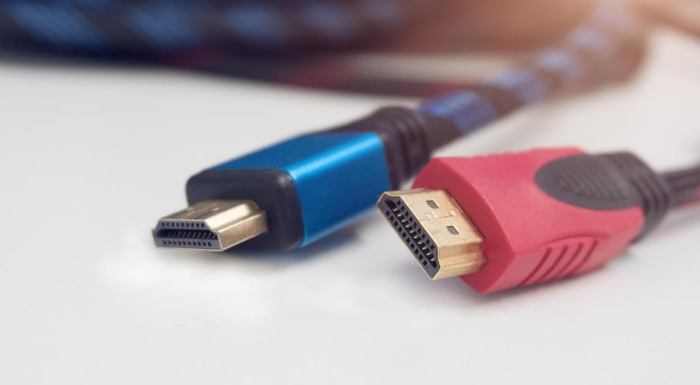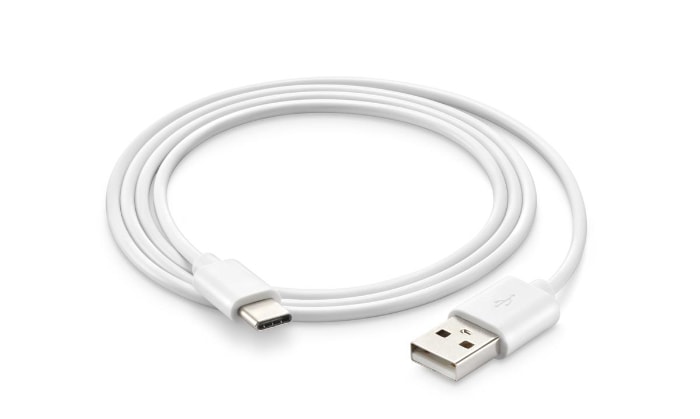The Battle of Interfaces: HDMI vs. USB Explained

Understanding the ins and outs of our digital world can sometimes be challenging, especially with the variety of connection interfaces available. Two of the most commonly used are HDMI and USB.
Each with their unique purposes and benefits, they have both become mainstays in our technology-driven lives. This blog seeks to dive into these two popular technologies, dissecting their key features, uses, and their evolutionary journey.
In this comprehensive guide, we'll explore the crucial differences between HDMI and USB, thereby enabling you to make more informed decisions in your daily digital interactions. Prepare for a fascinating journey into the world of tech interfaces as we unpack these vital components of our devices.
Overview of HDMI
High-Definition Multimedia Interface, commonly known as HDMI, is a proprietary audio/video interface used for transmitting uncompressed video data and compressed or uncompressed digital audio data. It's a standard that has seen extensive adoption in devices such as TVs, laptops, projectors, and gaming consoles.
History and Evolution of HDMI
HDMI first appeared in 2002, developed by a consortium of major electronics manufacturers including Philips, Panasonic, Sony, and Toshiba, among others. This group, known as HDMI LLC, aimed to create an industry-standard, high-definition multimedia interface that was backward-compatible with the previous DVI standard.
HDMI has gone through several versions since its inception, each improving on the previous. The latest version is HDMI 2.1. This version supports higher video resolutions and refresh rates, including 8K60 and 4K120, and dynamic HDR formats.
Common Uses of HDMI
HDMI is primarily used to connect audio and video devices. You'll often find HDMI ports in televisions, computers, monitors, gaming consoles, projectors, digital cameras, and more. It's favored for its ability to transmit both high-definition video and high-quality audio over a single cable, simplifying connections and minimizing cable clutter.
Technical Specifications of HDMI
HDMI cables carry digital signals, both audio and video, allowing for superb quality transmission. They can support video resolutions up to 10K, including 3D video, and up to 32 audio channels with incredible clarity. The HDMI 2.1 version can support bandwidths up to 48 Gbit/s.
To conclude, HDMI is a versatile, high-performance interface that has become an industry standard for a reason. Its capacity to deliver high-quality audio and video signals makes it an invaluable tool in our multimedia-rich world.
Overview of USB
Universal Serial Bus, widely known as USB, is an industry-standard that establishes specifications for cables, connectors, and protocols for connection, communication, and power supply between computers, peripheral devices, and other digital equipment. USB is ubiquitous in the modern world and is found in a wide array of devices.
History and Evolution of USB
USB technology was first developed in the mid-1990s by a consortium of companies, including Compaq, DEC, IBM, Intel, Microsoft, NEC, and Nortel. The goal was to simplify the connection of peripheral devices to a computer.
Since its inception, USB has evolved considerably. From USB 1.0, which offered a data transfer speed of up to 12 Mbps, to USB 3.2, capable of transfer speeds up to 20 Gbps. The most recent iteration, USB4, combines the USB-C connector with the high-speed data transfer capabilities of Thunderbolt, a technology developed by Intel, enabling transfer speeds up to 40 Gbps.
Common Uses of USB
USB's common uses are vast and varied due to its widespread adoption and versatility. It is used for data transfer, device charging, connecting peripherals such as mice, keyboards, printers, and scanners to a computer, and much more.
USB interfaces are found on almost every type of computer device, from laptops and desktops to digital cameras and smartphones.
Technical Specifications of USB
USB cables are capable of both data transfer and power supply, and different versions of USB offer varying levels of performance. USB 1.0 and 1.1 support low bandwidth devices, offering data transfer rates of 1.5 Mbps and 12 Mbps, respectively. USB 2.0, released in 2000, increased this dramatically to 480 Mbps.
USB 3.x versions made significant leaps in data transfer speeds: USB 3.0 introduced speeds of 5 Gbps, USB 3.1 doubled this to 10 Gbps, and USB 3.2 took it further to 20 Gbps. USB4, the latest version, can theoretically handle speeds up to 40 Gbps.
Comparing HDMI and USB

Moving forward, we arrive at a juncture where it becomes necessary to draw comparisons between HDMI and USB. Understanding their key differences is instrumental in determining their appropriate usage and leveraging their capabilities to the fullest.
Signal Transmission: Digital vs. Analog
HDMI exclusively transmits digital signals for both audio and video data. It’s the go-to interface for high-definition and ultra-high-definition signals, maintaining the integrity of the signal without the risk of degradation.
USB, on the other hand, is primarily used for digital data transmission but can also handle analog signals, particularly in the case of audio interfaces. It's important to note, however, that it doesn’t natively support video signals without specific video adapter devices or the use of protocols like DisplayLink.
Speed and Data Transfer Capabilities
When it comes to speed, USB 3.x and later versions provide superior data transfer rates, reaching up to 20 Gbps with USB 3.2 and up to 40 Gbps with USB4. These versions make USB ideal for fast data transfer scenarios, such as transferring files from external hard drives.
However, HDMI shines in a different aspect – it is designed for the transfer of high-quality audio and video signals, supporting up to 4K, 8K, and even 10K video content, along with high-definition audio.
Audio/Video Quality
HDMI is the preferred choice for high-quality audio and video transmission due to its capacity to handle uncompressed signals. This leads to a higher quality output for both sound and visual content, hence its widespread use in home theaters, gaming, and professional audio/video setups.
USB isn’t typically used for high-definition audio/video transmission, although it can be employed for these tasks with additional hardware or software. USB audio interfaces are commonly used in music production, and USB video adapters can be used to connect extra monitors to a computer.
Compatibility with Devices
Both HDMI and USB have extensive device compatibility. HDMI is the standard for connecting audio/video devices like gaming consoles, Blu-ray players, and sound systems to displays like monitors and TVs.
USB is universally found on computers and laptops, and USB ports are also present on many other types of devices, from printers and cameras to smartphones and music players. This broad compatibility makes USB the standard for connecting peripherals to computers and for charging many types of devices.
Usability (Installation and Ease of Use)
Both HDMI and USB are plug-and-play interfaces, meaning they don’t require special software installation to work. However, while HDMI primarily focuses on transmitting audio/video signals between devices, USB’s functions are more versatile, handling tasks such as data transfer, device charging, and connection of peripheral devices.
Use Cases and Scenarios
After exploring the individual attributes of HDMI and USB, it's time to examine some practical scenarios where these interfaces are employed. Understanding the use cases of HDMI and USB will give us a better insight into their roles in our digital lives and when to use one over the other.
When to Use HDMI
HDMI is designed to provide the highest quality audio and video signals, and as such, it's best used in scenarios where high-definition content is being transferred between devices.
Home Entertainment Systems: HDMI is the go-to choice for connecting devices like Blu-ray players, gaming consoles, and streaming devices to HDTVs or 4K TVs. The single cable carries both video and audio signals, simplifying the setup process.
Projectors: Whether for a business presentation or a home theater setup, HDMI is often used to connect laptops or media players to projectors. The high-quality video and audio transmission ensures a great viewing experience.
Monitors: For users who want the best visual quality, HDMI is a common choice for connecting computers to high-definition monitors. This is particularly relevant for gamers and professionals who work with high-resolution visuals.
When to Use USB
USB is a versatile interface that's used in a wide variety of scenarios, primarily focusing on data transfer and device connectivity.
Data Transfer: When you need to transfer data between devices, USB is often the best choice. Whether you're moving files to a flash drive or an external hard drive, USB's high transfer rates ensure the process is quick and easy.
Connecting Peripherals: USB is the standard for connecting peripherals like mice, keyboards, and printers to a computer. It's also commonly used for digital cameras, scanners, and many other devices.
Charging Devices: USB, and particularly the smaller USB-C variant, is increasingly becoming the standard for charging mobile devices. From smartphones to tablets and even many laptops, USB is often the power connector of choice.
Audio Interfaces: In the realm of music production, USB is often used for audio interfaces that connect instruments and microphones to computers.
As we can see, the choice between HDMI and USB will largely depend on the specific use case. Both have their strengths and their ideal scenarios.
Conclusion
We have dived into the intricacies of two vital technologies that form the backbone of our digital connectivity – HDMI and USB. Each has its unique strengths, and the choice between them will depend on the specific use case at hand.
HDMI, with its capacity for high-definition audio and video transmission, shines in home entertainment systems, professional audio/video setups, and gaming environments. Its ability to maintain the integrity of high-definition signals makes it the preferred choice for scenarios where quality of visual and auditory content is paramount.
On the other hand, USB, with its versatility and high data transfer rates, proves to be the go-to interface for a variety of applications, ranging from data transfer and device connectivity to powering devices. Its ubiquity and ease of use make it a mainstay in our daily digital interactions.
In summary, HDMI and USB are complementary technologies, each fulfilling different roles in the realm of digital connectivity. As these interfaces continue to evolve, we can expect to see even greater performance and more varied use cases.
Understanding their key differences and applications is instrumental in harnessing their potential and navigating our increasingly connected world. As we look to the future, it's clear that HDMI and USB will continue to play integral roles in our digital lives.


